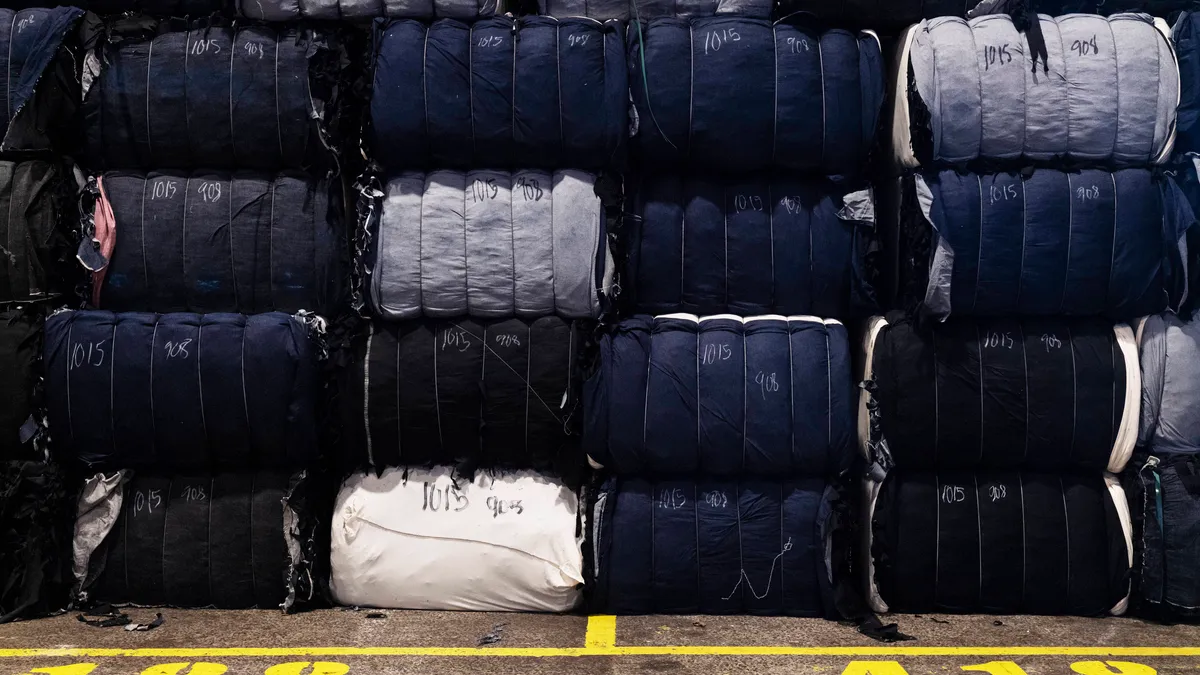Editor’s note: This story is part of a series on the de minimis rule's supply chain impact and its uncertain future. Read the previous story here.
Temu and Shein’s rapid rise to prominence has given the parcel delivery market a shot in the arm.
In July alone, the e-commerce marketplaces each provided carriers with about 900,000 packages daily in the U.S., according to ShipMatrix data shared with sister publication Supply Chain Dive.
The two companies’ shipments enter the country through a streamlined supply chain process that leans on the “de minimis” exemption. This helps keep prices low to draw in more shoppers — which generates more volume for carriers to deliver.
But mounting lawmaker scrutiny and Customs and Border Protection crackdowns are threatening the exemption’s future, at least in its current state. Parcel carriers are counting on Temu and Shein to adapt, given how intertwined some industry players have become with the two companies, experts interviewed by Supply Chain Dive said.
"I do think the smaller carriers and regional carriers would be greatly impacted by a disruption to the volume," said Nate Skiver, founder of parcel consultancy LPF Spend Management.
'Explosive' growth catches UPS' attention
For now, the boom is helping carriers regain volume momentum since the COVID-19 pandemic’s home delivery rush subsided.
After more than two years of sagging volume, UPS finally shook off its demand slump in the second quarter of 2024. Average daily U.S. volume went up 0.7% year over year in Q2 for the carrier, aided by heightened interest for its low-cost SurePost service.
UPS grows U.S. volume for first time since Q4 2021
CEO Carol Tomé said in a July earnings call that e-commerce companies operating a different shipping model than traditional UPS users helped drive this rebound.
"There were two new e-commerce customers that came into our network, and you can imagine who they are," Tomé said. "These are new e-commerce shippers in the United States whose volume has been quite explosive."
Temu and Shein weren’t mentioned in the call by name, but both companies use UPS, and experts interviewed by Supply Chain Dive said they are driving the carrier's surge in lightweight volume.
"It's the only two retailers that could have enough volume to actually impact their results like that," said Alan Amling, an assistant professor of practice at the University of Tennessee and former VP of corporate strategy for UPS.
Temu and Shein aren't just driving demand for UPS. Temu also uses FedEx, the U.S. Postal Service and a wide selection of smaller carriers to deliver packages once they arrive in the U.S., according to its website. Shein's website doesn't specify the carriers it uses, but it notes that returns can be made via UPS or the Postal Service.
"The only growth that's propping up the last-mile market is coming from cross-border e-commerce," said Andrew Townsend, SVP of corporate development and strategy at SpeedX, which delivers for both Temu and Shein.
Temu and Shein command low delivery prices
In exchange for all the volume they are giving carriers, Temu and Shein want generous shipping rates, carrier executives and industry observers told Supply Chain Dive.
"Having so much volume on a daily basis should allow them to negotiate some really favorable rates, and then taking into account just the broader U.S. parcel market is already soft, so that just commands better pricing," LPF Spend Management's Skiver said.
Inexpensive rates allow Temu and Shein to maintain highly competitive prices on the products they sell while still covering the cost of air shipping into the U.S., an essential cog in their supply chain models.
The companies' cost-centric approach leaves little room for speed, at least for their regular delivery methods. Temu's standard shipping is free for customers but delivery times can range from six to 22 days. Standard shipping on Shein is free for orders over $29 — otherwise, it costs shoppers $3.99 — and takes an estimated 10 to 13 days.
"If your average order value is sub-$40, there's not enough margin inside the box to pay for any type of premium delivery experience," said Derek Lossing, a former Amazon Logistics leader who is now the founder and principal advisor of Cirrus Global Advisors.
The low rates carriers provide Shein and Temu can squeeze their own profits if not properly managed. UPS' average daily ground shipping volume in the U.S. grew 2.3% year over year in Q2, but per-package revenue for the segment fell 3.3%.
UPS ground delivery profitability finally falls behind volume growth
UPS' CEO said the growth in lower-value volume isn't by design. Rather, the company's new e-commerce customers simply brought in much more volume than it anticipated.
"We need to manage through it and we will be managing through it," Tomé said. "So don't read anything into this other than we had new customers come into our network whose volume blew up."
Amid the profitability pressures, UPS is preparing a per-pound fee on all U.S. imports from 13 countries and territories starting Sept. 15. The highest charge will be levied on shipments from China, Hong Kong and Macau, which could help UPS mitigate lower revenues derived from Shein and Temu deliveries.
UPS hasn't been the only delivery provider attempting to adjust to the low-cost parcel boom. Pitney Bowes Global Ecommerce, which delivered for Shein, struggled to grow per-package revenue in the quarters prior to its shutdown announcement in August.
"Those volumes, think about things like Temu, Alibaba, those types of places, tend to come in at a much lower weight, which definitely impacts the rate per piece," Jason Dies, Pitney Bowes' former interim CEO, said on a May 2 earnings call.
Low-value volume can cover costs
There are more lucrative sectors that parcel carriers are serving, such as small- and medium-sized merchants and healthcare shippers. But the wave of low-cost e-commerce packages can keep trucks full and delivery routes busy to cover expenses and improve efficiency.
This equation is particularly important for smaller carriers as they seek to expand into new markets, experts said, with both Temu and Shein offering a straightforward way to lower service costs through increased delivery density. Anthony Pizza, VP of business growth and innovation at SpeedX, said the baseline volume tied to the likes of Temu and Shein will help the carrier attract more domestic customers.
"One of the nice benefits that has come from working with the China importers is that's allowed us to set a really good density in a lot of the areas that we are delivering to, which helps the unit economics like it does for a lot of other carriers," Pizza said. "It really helps us to have a more competitive service offering to get the domestic market, as well."
Even as U.S. lawmakers call for restricting the flow of low-cost goods entering the country directly from China, Pizza doesn't see the demand for Shein and Temu products cooling off. Only a complete removal of the $800 de minimis threshold could challenge that momentum, and even then, workarounds like shipping into Mexico prior to U.S. delivery are possible, Pizza said.
But Temu and Shein will have to be careful that any supply chain adjustment they make in response to new U.S. regulations doesn't lead to higher costs for their customers. Otherwise, shoppers accustomed to low prices may opt to shop elsewhere, putting carriers' volume windfall at risk.
"Your $10 pair of jeans might just become $12, so are you as willing to wait if you can get them on Amazon the next day for $14?" Cirrus Global Advisors' Lossing said.




















